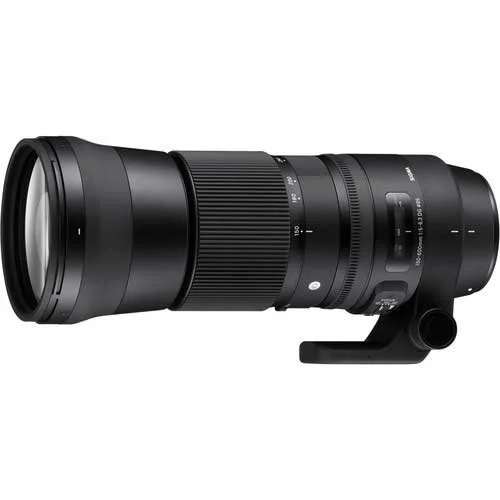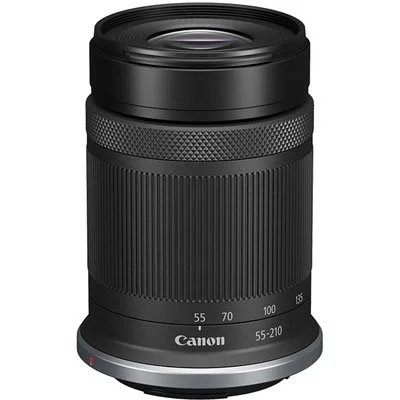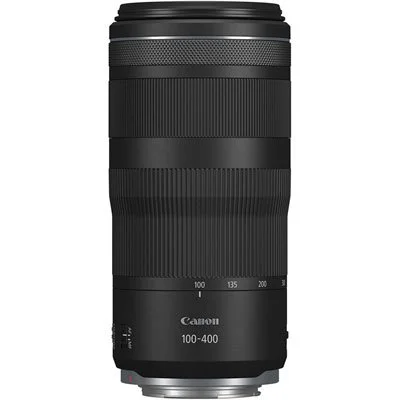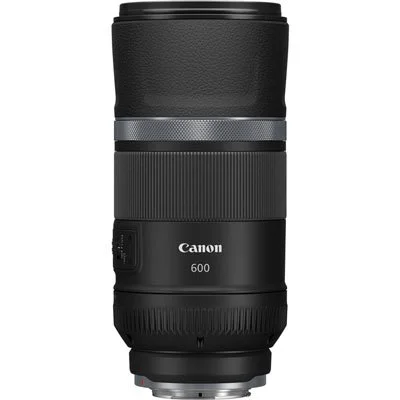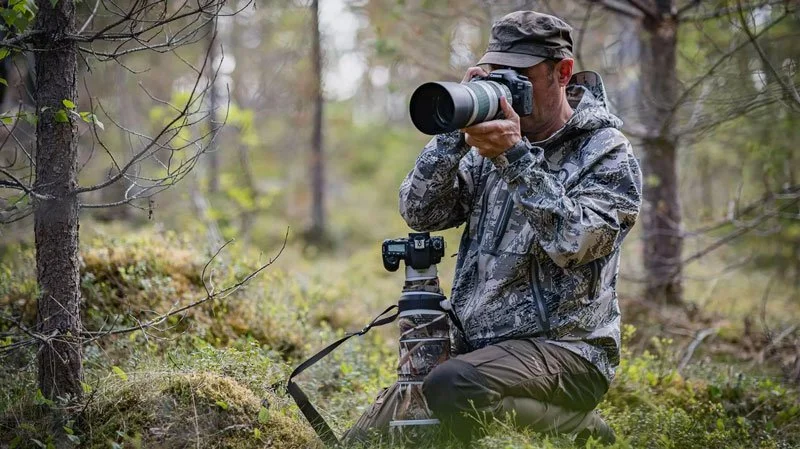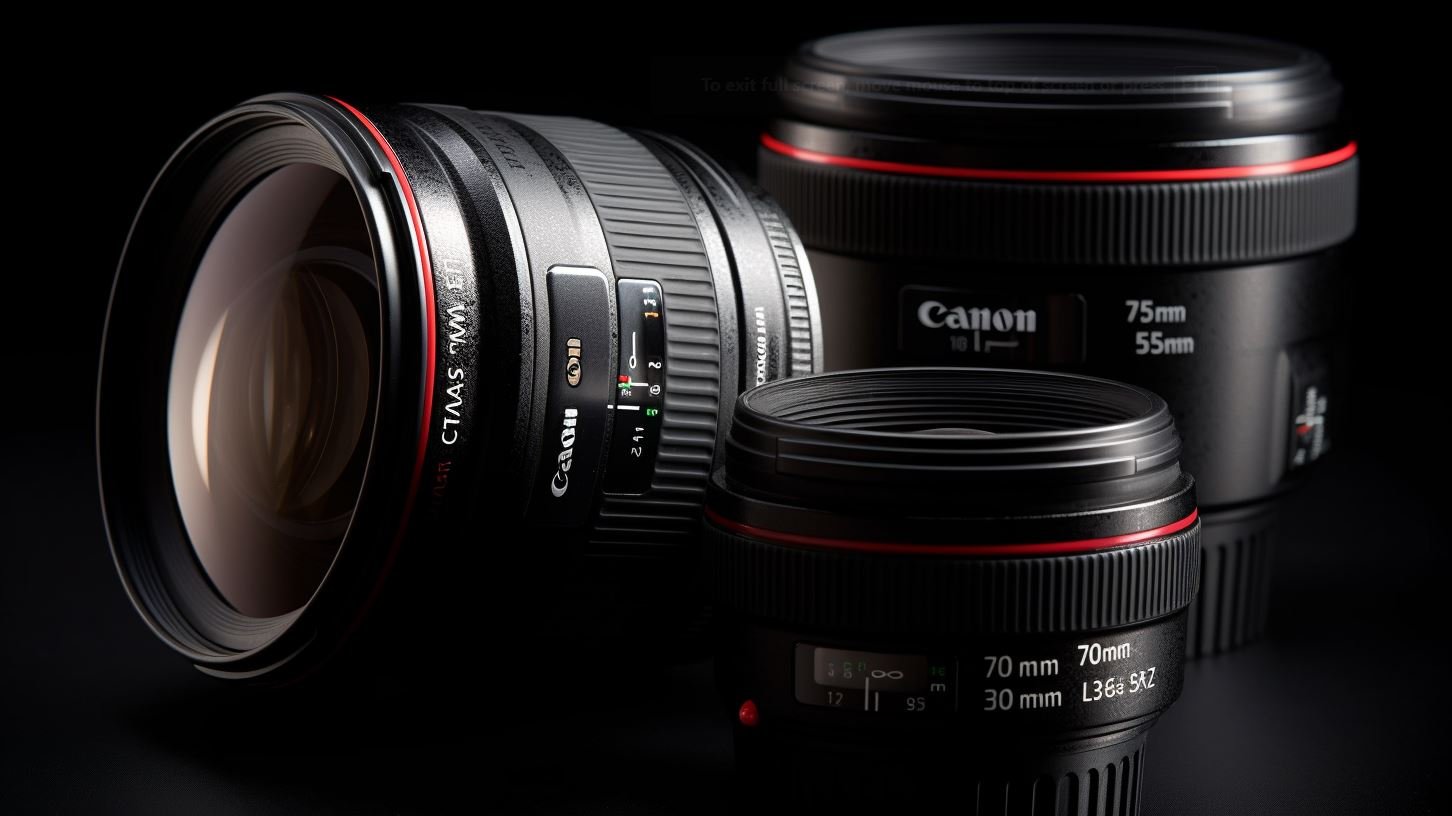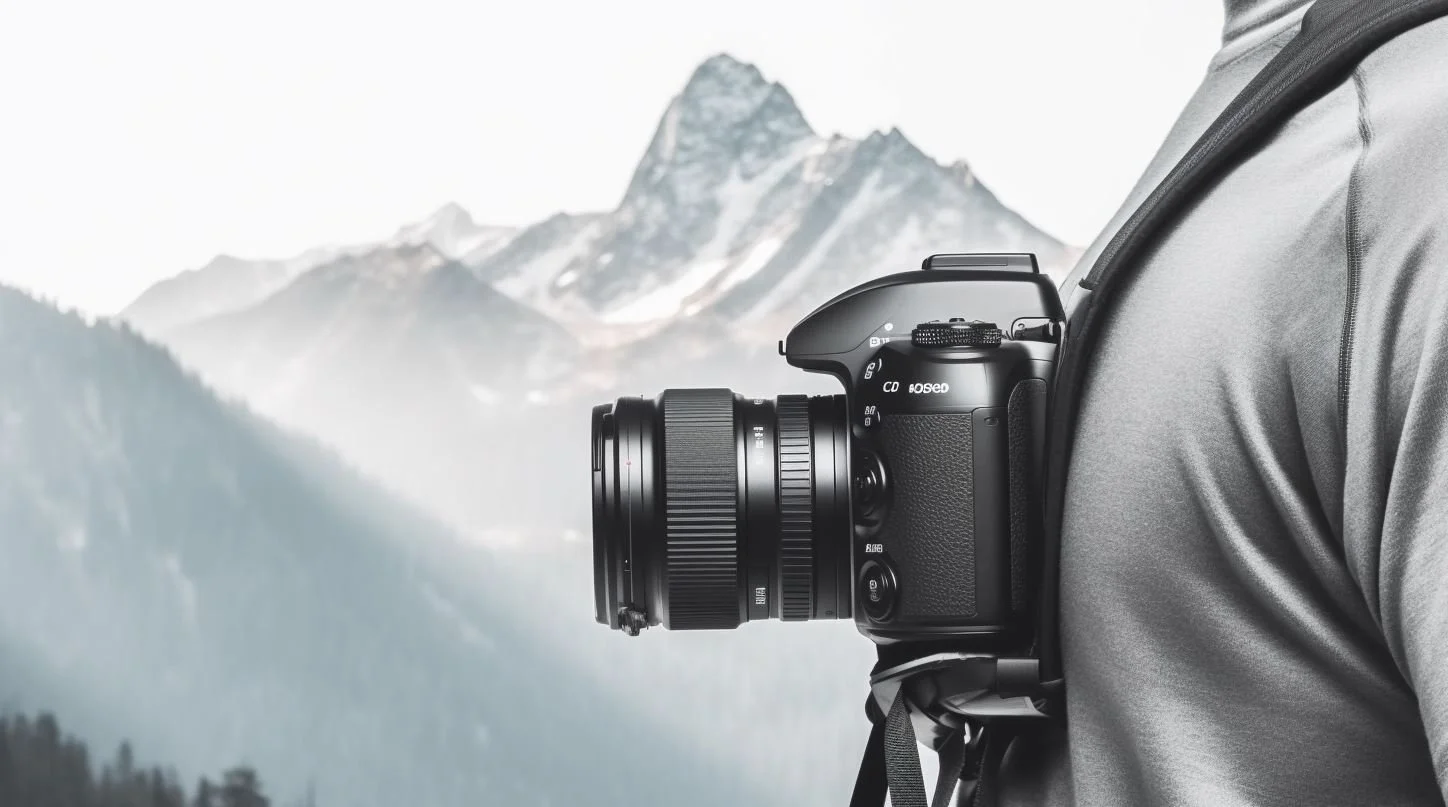Best Budget Lens for Wildlife Photography: Canon
Learn how to choose the best wildlife photography lens for your Canon camera.
Thinking of getting into wildlife photography with your Canon camera but aren’t ready to shell out thousands of dollars on the Canon EF 600mm f/4L? Don’t worry, there are many options to choose from that are much more budget-friendly.
This post will walk you through the best choices for Canon EF and RF mounts (DSLR or Mirrorless bodies).
Below are some of the best Canon lenses for wildlife photography sorted by category.
*Remember:
Prime Lenses tend to be lighter weight with wider apertures, resulting in better low light performance. However, if you do not like the composition of the image, you will have to walk toward/away from your subject to zoom in/out on the scene.
Zoom lenses are heavier with more narrow apertures, resulting in worse low light performance. However, zoom lenses are extremely flexible when composing your image. Additionally, zoom lenses are easier for locating and tracking your subject.
DSLR (EF Mount)
Zoom Lenses
Prime Lenses
Mirrorless (RF Mount)
Zoom Lenses
Prime Lenses
Best Budget Zoom Lenses (EF Mount)
Below you’ll find the best SLR Canon zoom lenses for birding ranked by price, from low to high.
Most Affordable: Canon EF 75-300mm f/4-5.6 III Lens (check price)
Best Value: Sigma 100-400mm f/5-6.3 DG OS HSM (check price)
Best Affordable Supertele: Sigma 150-600mm f/5-6.3 DG OS HSM (check price)
Best Budget Zoom SLR Lens
The Canon EF 75-300mm f/4-5.6 III Lens is an affordable and versatile telephoto zoom lens that is often recommended to beginners or hobbyists looking for an entry-level lens to explore the world of wildlife photography.
One of the main drawbacks of this lens is its relatively short focal length range of 75-300mm.
While it can be used for photographing wildlife at closer distances or larger mammals that are relatively still, the lens may struggle to capture small species that are further away or fast-moving animals.
To capture more detailed and intimate images of birds, a longer focal length is generally recommended.
Another drawback of this lens is its slower maximum aperture of f/4-5.6, which may make it challenging to capture fast-moving birds in low light situations or create a shallow depth of field. Additionally, the lens does not have built-in image stabilization, which can make it difficult to capture sharp images when hand-holding the camera.
That being said, the Canon EF 75-300mm f/4-5.6 III Lens is lightweight and compact, making it easy to carry around for extended periods.
It is also affordable, which makes it a good option for beginner wildlife photographers on a tight budget.
Bottom Line: The Canon EF 75-300mm f/4-5.6 III is a good entry-level lens for exploring the world of wildlife photography.
For best results, you’ll have to practice carefully approaching your subjects in a way that doesn’t scare them. These will be great skills for when you eventually upgrade to a longer, more professional lens.
| Focal Length | Maximum Aperture | Weight | Image Stabilization | Max Zoom Length | Filter Size |
|---|---|---|---|---|---|
| 75-300mm | f/4-5.6 | 1.06lb / 480g | No | 6.89" / 175mm | 58mm |
Pros
- Affordable
- Wide zoom range
- Lightweight
- Compact
Cons
- Relatively slow aperture
- 300mm is a bit short for wildlife
- No image stabilization
Best Value Zoom SLR Lens
Offering a blend of versatility and affordability, the Sigma 100-400mm f/5-6.3 DG OS HSM Contemporary Lens emerges as a compelling option for beginners or hobbyists venturing into the realm of wildlife photography.
With its focal length range extending from 100mm to 400mm, this lens provides a substantial reach that allows photographers to capture distant wildlife subjects with ease.
The extra 100mm of reach over the Canon EF 75-300mm f/4-5.6 III makes a big difference in photographing small or fast-moving species that are challenging to approach closely.
This extended focal length range enables photographers to compose detailed and intimate shots of birds and other elusive wildlife, a feat not easily achievable with shorter lenses.
One of the notable advantages of the Sigma 100-400mm lens over its competitors is its relatively faster autofocus performance, facilitated by the Hyper Sonic Motor (HSM) technology.
This feature proves invaluable when tracking fast-moving wildlife subjects, ensuring that crucial moments are captured with precision and clarity.
Additionally, the lens's Optical Stabilization (OS) mechanism minimizes camera shake, resulting in sharper images, even when shooting handheld in challenging lighting conditions.
Despite its impressive performance, the Sigma 100-400mm lens maintains a lightweight and compact form factor, making it highly portable and convenient for extended shooting sessions in the field. This attribute is particularly advantageous for wildlife photographers who often need to traverse rugged terrain or spend long hours observing wildlife behavior.
While the lens' maximum aperture of f/5-6.3 may not be as wide as some premium telephoto lenses, it remains sufficient for most wildlife photography scenarios. However, camera bodies with great ISO performance are required to take full advantage of this lens when shooting at dawn and dusk.
Bottom Line: The Sigma 100-400mm f/5-6.3 DG OS HSM Contemporary Lens is a great entry-level option for aspiring wildlife photographers.
Its combination of versatile focal length range, reliable autofocus performance, and compact design make it an ideal companion for capturing captivating images of wildlife in their natural habitat.
While it may not offer the same level of professional-grade features as higher-end lenses, the Sigma 100-400mm represents an excellent starting point for those looking to hone their skills and explore the fascinating world of wildlife photography.
| Focal Length | Maximum Aperture | Weight | Image Stabilization | Max Zoom Length | Filter Size |
|---|---|---|---|---|---|
| 100-400mm | f/5-6.3 | 2.55 lb / 1160 g | Yes | 9.54" / 242.2 mm | 67mm |
Pros
- Image stabilization
- Excellent sharpness
- Dust- and splash-resistant mount
- Compact
Cons
- Relatively slow aperture
- No tripod collar or lens case
Best Overall Zoom SLR Lens
The Sigma 150-600mm f/5-6.3 DG OS HSM Contemporary lens for Canon EF mounts is the best budget super telephoto zoom available.
Optical Performance
The lens's optical design, featuring one FLD and three SLD elements, aims to tackle chromatic aberrations and color fringing effectively.
Users have reported significant success in this area, noting that images appear clear and color accurate, particularly at the center of the frame.
However, some have observed slight softness at the extreme telephoto end when shooting wide open, which can be mitigated by stopping down the aperture.
The Super Multi-Layer Coating proves its worth in real-world applications, effectively reducing lens flare and ghosting, thus ensuring that images retain contrast and color fidelity even in challenging lighting conditions.
Autofocus and Stabilization in Practice
The Hyper Sonic Motor (HSM) delivers on its promise of quick and quiet autofocus, a critical feature for capturing fleeting moments in wildlife and sports photography.
However, the autofocus speed is somewhat variable across the zoom range and lighting conditions, with a noticeable slowdown in lower light.
The Optical Stabilizer (OS) system is a standout, significantly enhancing the capability to shoot handheld. Users report a noticeable improvement in image sharpness at slower shutter speeds, affirming the effectiveness of the stabilization in extending the lens's versatility.
Build Quality and Ergonomics
Constructed with Thermally Stable Composite (TSC) material, the lens feels robust yet surprisingly manageable for its size.
The dust- and splash-resistant design has been praised by those shooting in challenging outdoor conditions, offering peace of mind when weather conditions are less than ideal. The removable tripod collar is appreciated for its stability and ease of rotation, facilitating smooth transitions between orientations.
However, the lens's weight and size, while relatively compact for its class, can still be cumbersome for prolonged handheld shooting, suggesting a trade-off between reach and portability.
User-Friendly Features and Limitations
The zoom lock switch is a simple yet effective feature, preventing zoom creep during transportation or when shooting at angled positions.
Compatibility with Sigma's teleconverters is a boon for those seeking even greater focal lengths, although it's important to note the impact on maximum aperture and autofocus performance.
Bottom Line
The Sigma 150-600mm f/5-6.3 DG OS HSM Contemporary lens delivers long reach, sharp color-accurate images, and effective stabilization, ideal for wildlife and photography.
While its size and autofocus performance in low light represent areas for compromise, the lens's overall value remains strong.
The combination of versatility, image quality, and robust build quality, balanced against its limitations, positions the Sigma 150-600mm Contemporary as the best super telephoto zoom on the market.
| Focal Length | Maximum Aperture | Weight | Image Stabilization | Max Zoom Length | Filter Size |
|---|---|---|---|---|---|
| 150-600mm | f/5-6.3 | 4.03 lb / 1830 g | Yes | 13.39" / 340mm | 95mm |
Pros
- Super telephoto
- Image stabilization
- Excellent sharpness
- Dust- and splash-resistant mount
- Compact
Cons
- Relatively slow aperture
- A little heavy
Best Prime SLR Canon Lenses for Bird Photography
Below you’ll find the best SLR Canon prime lenses for birding ranked by price, from low to high. None of them are cheap by any means, and all are a great choice for bird photography.
The Only Affordable EF-mount Prime:
Expensive, Professional Options:
Best Value: Canon EF 400mm f/4 DO IS II USM Lens
Best 400mm: Canon EF 400mm f/2.8L IS III USM Lens
Best 600mm: Canon EF 600mm f/4L IS III USM Lens
Best Value Prime SLR Lens
The TTArtisan 500mm f/6.3 telephoto lens is an absurdly affordable super telephoto prime lens that actually doesn’t suck.
Build and Design
The lens boasts a solid build quality, incorporating an extra-low dispersion (ED) glass element within its optical design.
The inclusion of a built-in tripod collar and lens hood further contributes to its practical design, offering stability during shoots and reducing lens flare and ghosting.
With its manual focus mechanism, facilitated by a large, tactile focus gear ring, photographers can expect precise focusing control, although this may require a learning curve for those accustomed to autofocus systems.
Optical Performance
The TTArtisan 500mm f/6.3 lens has a fixed aperture of f/6.3, simplifying the shooting process by eliminating the need to adjust the aperture in varying lighting conditions. This feature, coupled with the lens's 8 elements in 5 groups optical construction and 12 diaphragm blades, promises to deliver images with good bokeh at closer focus distances, making it suitable for a range of telephoto photography needs from wildlife to sports.
However, the lens does have its drawbacks. Users have reported strong chromatic aberrations and low contrast at the maximum aperture of f/6.3, particularly at closer focusing distances. These issues can somewhat be mitigated by stopping down the lens, though at the expense of light intake. Additionally, the lens's manual focus design and the absence of image stabilization mean that capturing moving subjects can be challenging, necessitating the use of a sturdy tripod and a patient, steady hand.
Practicality and Applications
The TTArtisan lens affordability makes it an attractive entry point for enthusiasts looking to explore the realms of telephoto photography without committing to more expensive gear.
However, its manual focus nature and the challenges associated with handling such a long lens limit its versatility and ease of use, particularly for beginners or those requiring quick focus adjustments in dynamic shooting environments.
Bottom Line:
The TTArtisan 500mm f/6.3 ED IF offers an affordable entry into long-range photography with a solid build and potential for good bokeh, making it intriguing for static wildlife shots.
However, its strong chromatic aberrations and the necessity to stop down for sharper images limit its versatility.
The manual focus and substantial setup required for stability complicate its use for tracking moving animals.
Best suited for stationary wildlife subjects or planned shots where its limitations can be managed.
Pros
- Affordable
- Super telephoto
- Solid build quality
Cons
- Relatively slow aperture
- Chromatic aberrations
- Manual focus
Best Budget Zoom Mirrorless Canon Lenses for Wildlife Photography
Below you’ll find the best mirrorless Canon zoom lenses for birding ranked by price, from low to high.
*Since many mirrorless cameras have an APS-C sensor size, their focal length will appear 1.5x longer than stated. For this reason, some of the recommended mirrorless Canon lenses are below the minimum 300mm focal length.
Best Budget: Canon RF-S 55-210mm f/5-7.1 IS STM Lens
Best Value: Canon RF 100-400mm f/5.6-8 IS USM Lens
Best Budget Zoom Mirrorless Lens
The Canon RF-S 55-210mm f/5-7.1 IS STM lens is a versatile zoom lens that is suitable for a variety of photography genres, including bird photography. However, it is important to note that it has some limitations when it comes to capturing small, distant subjects such as birds.
However, some of the disadvantages are lessened when used with a mirrorless APS-C camera, which increases the effective focal length to 82-315mm, putting it at the minimum recommended focal length for birds and other wildlife subjects at maximum zoom.
One of the biggest advantages of the RF-S 55-210mm lens is its lightweight and compact design, making it easy to carry around and use for extended periods. It also has a decent focal length range that can cover most wildlife scenarios.
The lens features an image stabilization system that compensates for camera shake, allowing you to capture sharp and steady shots even in low light conditions. This feature can be particularly helpful when shooting wildlife in dimly lit areas, such as under tree canopies or in the early morning or late evening.
The lens also features an STM autofocus motor that provides smooth and quiet focusing, which can help keep your subject calm. The lens also has a close focusing distance of 0.5 meters, which allows you to capture detailed close-up shots.
However, the RF-S 55-210mm lens has a relatively small maximum aperture of f/5-7.1, which means it may not be the best option for low light conditions. Additionally, at longer focal lengths, the lens can suffer from softness and loss of detail, which can make it challenging to capture small, distant animals.
Bottom Line: The Canon RF-S 55-210mm f/5-7.1 IS STM lens can be a good choice for wildlife photography if you are looking for a lightweight and versatile zoom lens that can cover a wide range of shooting scenarios. However, it may not be the best option for capturing small and distant subjects, especially in low light conditions. For those types of shots, a lens with a larger maximum aperture and longer focal length may be more suitable.
| Focal Length | Maximum Aperture | Weight | Image Stabilization | Max Zoom Length | Filter Size |
|---|---|---|---|---|---|
| 55-210mm | f/5-7.1 | 9.5oz / 270g | Yes | 5.3" / 135mm | 55mm |
Pros
- Affordable
- Ultralight
- Compact
- Image stabilization
Cons
- Slow maximum aperture
- Not weather sealed
- Not the sharpest lens
Best Value Zoom Mirrorless Lens
The Canon RF 100-400mm f/5.6-8 IS USM lens is an excellent lens for wildlife photography, especially for capturing small and distant subjects.
This lens is designed for Canon's full-frame mirrorless cameras and provides an impressive focal length range that covers a wide range of shooting scenarios.
One of the key advantages of this lens is its long focal length, which allows you to capture sharp and detailed shots of wildlife even from a considerable distance.
The lens also features an image stabilization system that compensates for camera shake, allowing you to shoot handheld without having to worry about blurry images.
The lens has a maximum aperture range of f/5.6-8, which means it is best used in good lighting conditions. However, it is possible to achieve good results in low light conditions by increasing the ISO setting or using a tripod.
The RF 100-400mm lens features an advanced autofocus system that provides fast and accurate focusing, making it easier to capture wildlife in motion. The lens also has a minimum focusing distance of 0.88 meters, which allows you to get closer to your subject and capture detailed close-up shots.
The lens also features a built-in zoom lock switch, which allows you to lock the lens at a specific focal length, preventing the lens from accidentally extending or contracting. This feature can be helpful when shooting birds in flight, as it can help you maintain a steady shot.
Bottom Line: The Canon RF 100-400mm f/5.6-8 IS USM lens is an excellent option for wildlife photography. The lens is well-built, features an advanced autofocus system, and has an impressive focal length range that covers a wide range of shooting scenarios.
| Focal Length | Maximum Aperture | Weight | Image Stabilization | Max Zoom Length | Filter Size |
|---|---|---|---|---|---|
| 100-400mm | f/5.6-8 | 1.4lb / 635g | Yes | 9.75" / 248mm | 67mm |
Pros
- Great price for the performance
- Ultralight
- Full frame format
- Image stabilization
Cons
- Slow maximum aperture
- Not weather sealed
Best Prime Mirrorless Canon Lenses for Bird Photography
Below you’ll find the best mirrorless prime lenses for wildlife photography ranked by price, from low to high.
Best Budget Prime Mirrorless Lens
The TTArtisan 500mm f/6.3 telephoto lens is an absurdly affordable super telephoto prime lens that actually doesn’t suck, but does have its drawbacks.
Build and Design
The lens boasts a solid build quality, incorporating an extra-low dispersion (ED) glass element within its optical design.
The inclusion of a built-in tripod collar and lens hood further contributes to its practical design, offering stability during shoots and reducing lens flare and ghosting.
With its manual focus mechanism, facilitated by a large, tactile focus gear ring, photographers can expect precise focusing control, although this may require a learning curve for those accustomed to autofocus systems.
Optical Performance
The TTArtisan 500mm f/6.3 lens has a fixed aperture of f/6.3, simplifying the shooting process by eliminating the need to adjust the aperture in varying lighting conditions.
This feature, coupled with the lens' 8 elements in 5 groups optical construction and 12 diaphragm blades, promises to deliver images with good bokeh at closer focus distances, making it suitable for a range of telephoto photography needs from wildlife to sports.
However, the lens does have its drawbacks. Users have reported strong chromatic aberrations and low contrast at the maximum aperture of f/6.3, particularly at closer focusing distances. These issues can somewhat be mitigated by stopping down the lens, though at the expense of light intake. Additionally, the lens's manual focus design and the absence of image stabilization mean that capturing moving subjects can be challenging, necessitating the use of a sturdy tripod and a patient, steady hand.
Practicality and Applications
The TTArtisan lens affordability makes it an attractive entry point for enthusiasts looking to explore the realms of telephoto photography without committing to more expensive gear.
However, its manual focus nature and the challenges associated with handling such a long lens limit its versatility and ease of use, particularly for beginners or those requiring quick focus adjustments in dynamic shooting environments.
Bottom Line:
The TTArtisan 500mm f/6.3 ED IF offers an affordable entry into long-range photography with a solid build and potential for good bokeh, making it intriguing for static wildlife shots.
However, its strong chromatic aberrations and the necessity to stop down for sharper images limit its versatility.
The manual focus and substantial setup required for stability complicate its use for tracking moving animals.
Best suited for stationary wildlife subjects or planned shots where its limitations can be managed.
Pros
- Affordable
- Super telephoto
- Solid build quality
Cons
- Relatively slow aperture
- Chromatic aberrations
- Manual focus
Best Value Prime Mirrorless Lens
The Canon RF 600mm f/11 IS STM lens is an affordable and lightweight option for wildlife photography, especially if you are looking for a lens with a long focal length.
This lens is designed for Canon's full-frame mirrorless cameras and provides an impressive focal length of 600mm.
One of the key advantages of this lens is its long focal length, which allows you to capture sharp and detailed shots of birds even from a considerable distance.
The lens also features an image stabilization system that compensates for camera shake, allowing you to shoot handheld without having to worry about blurry images.
The lens has a fixed aperture of f/11, which means it is best used in good lighting conditions. However, it is possible to achieve good results in low light conditions by increasing the ISO.
The RF 600mm lens features an STM autofocus system that provides smooth and quiet focusing, making it easier to capture birds without scaring them off. The lens also has a minimum focusing distance of 4.5 meters, which makes it less suitable for capturing detailed close-up shots of birds.
The lens is also extremely lightweight and compact for its size, making it easy to carry around and use for extended periods. However, the lens does not have the same build quality as Canon's L-series lenses, which may be a concern for some photographers.
Bottom Line: The Canon RF 600mm f/11 IS STM lens is a good option for wildlife photography if your camera has good ISO performance. The f/11 aperture is pretty limiting otherwise, and would require bright sunlight to achieve usable images, which is not ideal lighting for contrast and smooth shadows. However, the lens is extremely lightweight for its focal length and its price is right for beginners.
| Focal Length | Maximum Aperture | Weight | Image Stabilization | Length | Filter Size |
|---|---|---|---|---|---|
| 600mm | f/11 | 2.05lb / 930g | Yes | 10.61" / 267mm | 82mm |
Pros
- Lightweight
- Compact
- Full frame format
- Image stabilization
Cons
- Very slow maximum aperture
- Mostly plastic
Best 800mm Prime Mirrorless Lens
The Canon RF 800mm f/11 IS STM lens stands out as a budget-friendly and lightweight choice for wildlife photography, particularly appealing for those in pursuit of a lens with an extensive focal length.
Tailored for Canon's full-frame mirrorless camera system, this lens boasts an exceptional 800mm focal length, enabling the capture of crisp and detailed images of distant subjects, such as birds, from afar.
A significant benefit of this lens is its considerable focal length, which ensures sharp, high-resolution photographs of wildlife without needing to be physically close.
It incorporates an image stabilization mechanism that offsets camera shake, facilitating handheld shooting and diminishing the risk of blurred photos.
With a fixed aperture of f/11, the lens is optimized for use in well-lit environments. Nevertheless, satisfactory outcomes can still be achieved in lower light by adjusting the ISO setting.
The RF 800mm lens is equipped with an STM autofocus system, which guarantees smooth and silent focusing, essential for not disturbing wildlife during shooting. The lens's minimum focusing distance of 6 meters, however, makes it less ideal for capturing intricate close-up images of subjects.
Despite its impressive reach, the lens is remarkably light and portable for its size, making it convenient for prolonged use and transport. It is important to note, though, that the construction quality does not match that of Canon's premium L-series lenses, which might raise durability concerns for some users.
Bottom Line: The Canon RF 800mm f/11 IS STM lens represents an excellent choice for wildlife photographers who value long focal lengths and have cameras capable of high ISO performance. While the f/11 aperture limits its versatility in varied lighting conditions, necessitating bright sunlight for optimal image quality, the lens's portability and affordability make it an attractive option for beginners and enthusiasts alike.
| Focal Length | Maximum Aperture | Weight | Image Stabilization | Length | Filter Size |
|---|---|---|---|---|---|
| 800mm | f/11 | 2.77 lb / 1260 g | Yes | 13.85" / 351.79mm | 95mm |
Pros
- Lightweight
- Compact
- Full frame format
- Image stabilization
Cons
- Very slow maximum aperture
- Mostly plastic
Wildlife Lenses FAQ
-
In general, most wildlife photographers prefer a focal length of at least 300mm, but many prefer even longer lenses in the 400mm-600mm range and beyond.
A longer focal length allows the photographer to get closer to the animal without disturbing it, which can result in more detailed and intimate images.
It also allows the photographer to isolate their subject from its background, creating a more pleasing image.
That being said, longer focal lengths can make it more challenging to find and track wildlife (especially birds), and they also tend to be more expensive and heavier.
Additionally, some animals may be too large to fit within the frame of a super-telephoto lens, requiring the photographer to use a shorter focal length.
Ultimately, the best focal length for wildlife photography will depend on the individual photographer's needs and preferences, as well as the specific circumstances of each situation.
-
In general, a focal length of 400-600mm is ideal for capturing birds in flight.
However, the ideal focal length depends on several factors, including the size and speed of the bird, the distance between the bird and the photographer, and the desired composition of the photograph.
Generally speaking, a longer focal length is preferred for capturing birds in flight, as it allows the photographer to get closer to the subject and capture more detail.
For larger birds or for birds that are flying at a greater distance, a focal length of 400mm or longer is usually preferred.
This allows the photographer to capture more detail in the bird, including feathers and other fine features, and to create a more dramatic image.
It also helps to isolate the bird from its surroundings and to create a pleasing blurred background.
However, it's important to note that a longer focal length also makes it more difficult to track the bird and keep it in the frame.
Additionally, the use of a long focal length may result in a narrower field of view, which can make it more challenging to anticipate the bird's movements and capture the perfect shot.
-
In general, a lens with a focal length of at least 300mm is recommended for wildlife photography.
A 300mm lens is a good starting point, as it will allow you to get relatively close to your subject and capture some detail in your images.
This focal length can be especially useful for photographing larger birds, such as waterfowl or raptors, from a relatively close distance.
That being said, a lens with a longer focal length, such as 400mm or 500mm, is generally preferred for bird photography, as it allows the photographer to get even closer to the subject and capture more detail.
Longer focal lengths are particularly useful for photographing smaller animals, such as songbirds, which may be difficult to approach without spooking them.
How To Choose A Wildlife Lens
Choosing the ideal camera lens for wildlife photography requires careful consideration to ensure you capture those breathtaking moments in nature. Here are some crucial aspects to consider when selecting a camera lens for this genre.
Focal Length
The focal length is paramount in wildlife photography. Since wildlife subjects can range from small to large and might be observed at varying distances, a lens with a long focal length is indispensable. A minimum of 300mm is often suggested, but many wildlife photographers find lenses in the 400-600mm range more versatile and effective.
The benefit of a longer focal length is the greater magnification it provides, allowing you to fill the frame with your subject and capture intricate details. However, it's worth noting that lenses with longer focal lengths can be more challenging to handle due to their size and weight, and they are generally more costly.
Aperture
Aperture plays a critical role in lens selection for wildlife photography. A lens with a wider aperture (lower f-number) admits more light, facilitating faster shutter speeds to freeze motion and achieving a shallow depth of field to isolate the subject from its background.
Although lenses with wide apertures are ideal for creating visually striking images, they tend to be pricier. Moreover, the wider the aperture, the shallower the depth of field, potentially complicating the task of keeping your entire subject in sharp focus.
Image Stabilization
Image stabilization is crucial, especially when photographing moving subjects or in low-light conditions. It minimizes camera shake, thus enhancing image sharpness. While some cameras offer in-body stabilization, lens-based stabilization is often preferred for its specificity and effectiveness with the attached lens.
Autofocus
A responsive and precise autofocus system is essential for wildlife photography, where subjects often move unpredictably. Seek lenses known for their swift and accurate autofocus capabilities, and consider how they perform under different lighting conditions.
Weight and Size
Given that wildlife photography frequently involves navigating through various terrains, the portability of your lens is an important factor. Bulky and heavy lenses can be burdensome during long treks. Opt for a lens that strikes a balance between weight, size, and the optical quality you require.
Conclusion
Selecting a lens for wildlife photography involves a balance of focal length, aperture, image stabilization, autofocus performance, and the physical characteristics of the lens. By prioritizing these factors, you can choose a lens that not only meets your wildlife photography needs but also enhances your field experience, allowing you to capture the natural world in all its splendor.
Support Acoustic Nature
If you enjoyed this post and would like to help support Acoustic Nature, please consider "buying me a coffee" or becoming a Patreon with the buttons below.
As a thank you for your support, Patreon supporters receive a copy of Field Recording For Beginners, exclusive access to the full Behind The Sounds video series, nature sound library downloads, and more.
If you are unable to support the site financially, please share this post with others, or leave a comment below letting me know you enjoyed this post! Both are free and help the website grow. Thank you ♫
Thanks for reading,
-Jared




